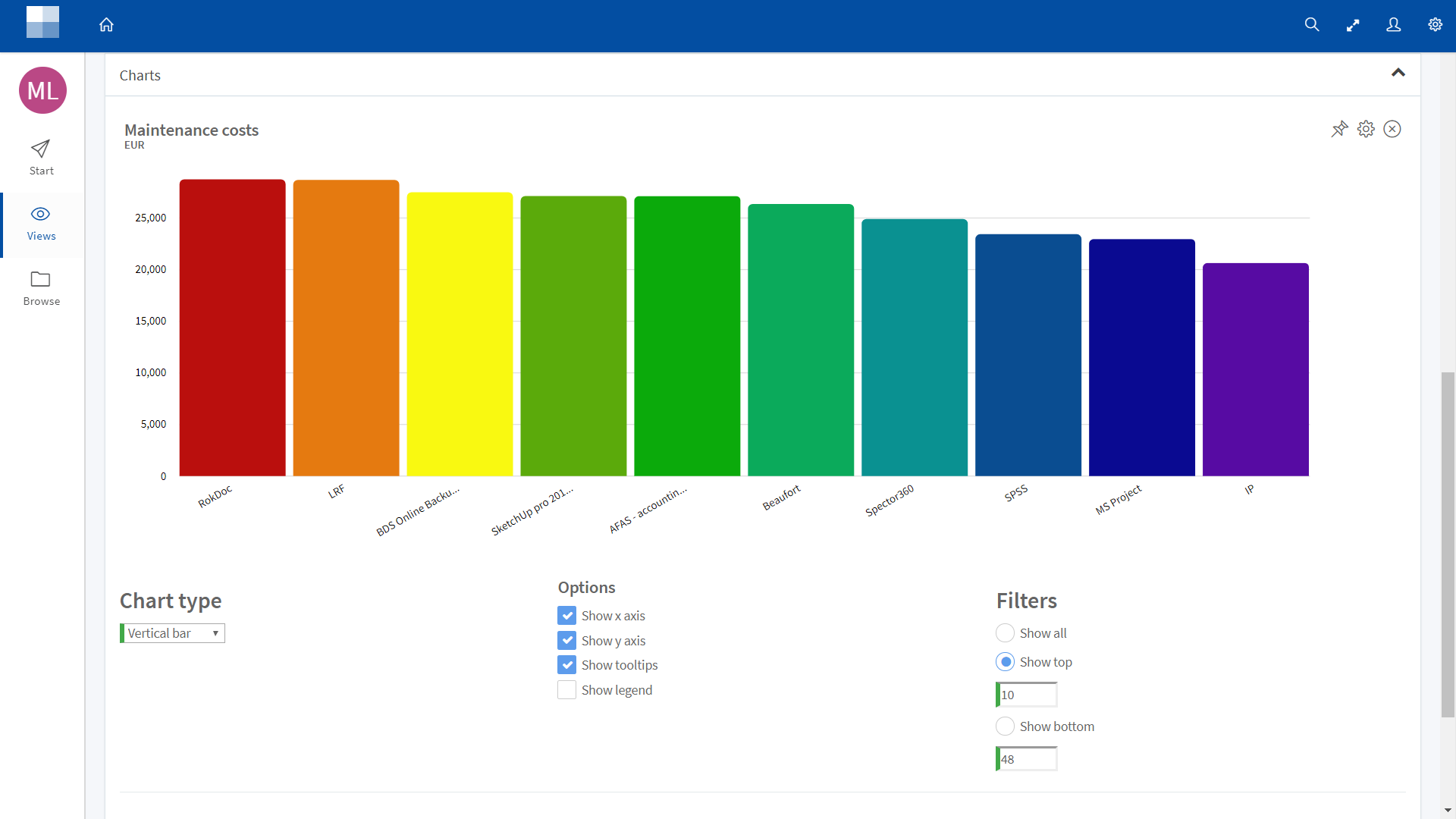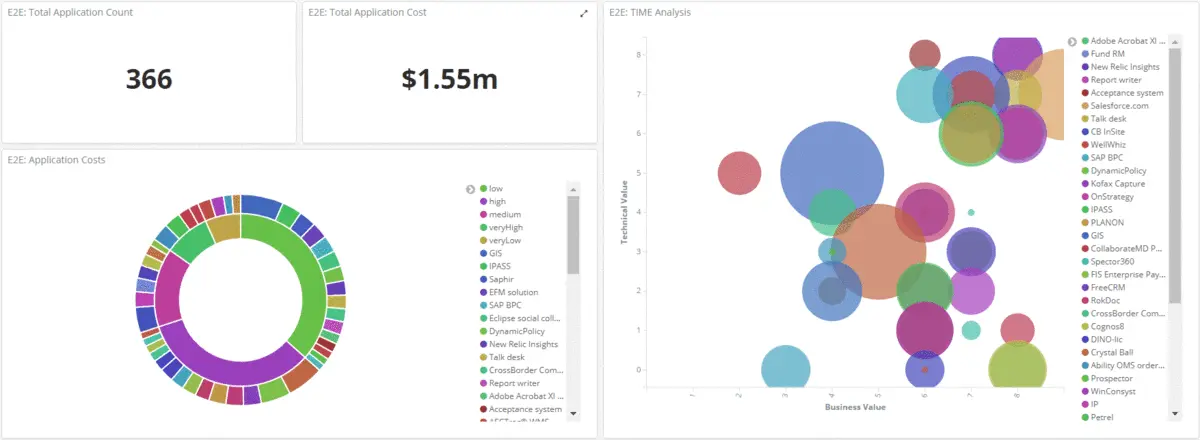In my recent blog post on stakeholder communication, I described various basic forms of communication about architecture, with diagrams, tables, heatmaps and the like. What I did not touch upon in that post is how you can enrich your architecture (and other) models with additional data and display the results in various dashboards. That is the topic of this post.
First of all, of course you need to think about the desired insights from your analyses and the available input data. In my series on analysis techniques, I already discussed much of this. For example, if you want to do a financial analysis of your application landscape, you need to acquire input data like license cost, maintenance cost, support cost, infrastructure cost, service provider cost, et cetera. Using the architecture model as a backbone, you can then calculate relevant metrics on your applications and display these in dashboards with various charts, tables and other visualizations.
There are three main ways to create dashboards using BiZZdesign’s tool suite.
You can create predefined dashboards using the portfolio management functionality in the Enterprise Studio modeling environment. These can be exported and published in our Horizzon portal, where they look the same as in the modeling environment. This has been discussed extensively in previous blogs, for example in the aforementioned post on financial analysis. I will therefore not go deeper into this here.
You can visualize data in the Horizzon portal by creating ad-hoc overlays and charts. Simply clicking on an element in a view pops up the element’s properties and metrics, and you can then on the fly create heatmaps, add labels or show charts for such an attribute. This is especially useful if you want to explore data interactively, without having a preconceived idea of what you might find and how to display that. Two examples are shown below (click to enlarge). In the first, an ad-hoc heatmap (color view) of the application landscape is created, displaying license costs. The second shows a bar chart with the 10 most expensive applications.


You can set up custom dashboards in Horizzon using Kibana (part of the Elastic stack). This offers you extensive analysis capabilities and highly interactive visualizations. Below you see an example of an application portfolio dashboard created this way (click to enlarge). Simply by clicking on a slice in the pie chart on the left, the whole dashboard is interactively filtered to only show elements with the selected value, in this case the ‘very high risk’ applications. This allows you to explore large and complex data sets and zoom in on significant elements with ease. The rather busy bubble chart on the right, which shows all applications in the landscape with their business value and technical value on the axes and their cost in the bubble size, is instantly filtered down to a more manageable level. And there are many other ways to filter these dashboards to zoom in on your specific interests.

You can also use these dashboards to display geographical data or time series, as is shown in the dashboard below from an airport use case. This depicts on the left the number of arriving and departing flights from various countries, and on the right a number of other metrics. For some of these, such as passenger satisfaction and operational cost, the variation over time is shown. This operational cost, in turn, is partially based on an analysis of the architecture as mentioned above, addressing the cost of applications in particular.

Analyzing trends in this type of data may help you predict future developments and take mitigating measures. In this case, for example, the airport wants to curb rising operational costs by rationalizing the application landscape, while at the same time improve passenger satisfaction by employing new forms of digital interaction and using tracking data to optimize passenger flow throughout the airport. They want to distinguish between transit passengers, whose main concern is catching their connecting flight, and point-to-point passengers, who have more time to kill before a flight and might appreciate a great shopping experience more. This may increase airport revenues as well, which also helps in dealing with the rising operating costs. The combination of data shown above thus offers insights that could not be gained from looking at individual models or data sources.
The examples above only scratch the surface. Adding data to your architecture models offers very interesting opportunities for analysis of various relationships, the evolution over time of your business and its architecture, and even the use of AI and machine learning to uncover hidden trends, patterns or anomalies (something I plan to write about in the future).
Moreover, these dashboards can be shared with any relevant stakeholder in your organization, from strategic decision makers to those who want to improve their local business processes. Increasingly, organizations expose such insights to their entire workforce, as outlined in a recent Harvard Business Review article on why AI will shift decision making from the C-suite to the front line. This is aligned with our own vision on the consumerization of EA, which I’ve addressed before.
Do you want to know more about the possibilities of data analysis and dashboarding with HoriZZon? Book a demo!